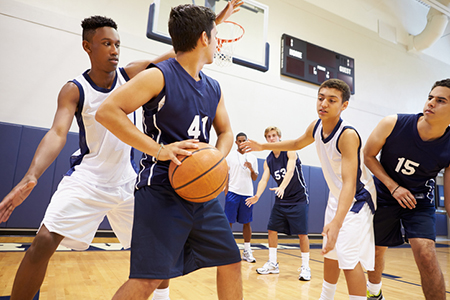Introduction
Our bodies are made for physical activity. The definition of physical fitness is not a “good body” or a “good figure.” Although these may be some desirable results from exercise and fitness, they are not the most valuable benefits. Physical fitness is the ability to perform daily activities with the strength, endurance, and stamina needed and energy to spare.

Following successful completion of this lesson, students will be able to...
- Identify ways to prevent, reduce, and treat injuries associated with physical activities.
- Determine when medical care is needed for physical activity injuries.
- Describe the principle of RICE (Rest, Ice, Compression, Elevation) as care for a sprain.
- Analyze personal health status to establish a baseline for setting fitness goals.
- Set long-term goals for achieving physical fitness and apply short-term steps to reach the goals.
- Analyze the role of self-responsibility for improving physical fitness.
- Describe healthy practices to improve physical fitness of self and others.
- Identify health risks associated with sedentary lifestyle.
Essential Questions
- How does physical fitness improve my health status?
- What are the components of physical fitness?
- What are the consequences of a sedentary lifestyle?
- How do I develop a personal fitness plan?
- How do I prevent physical activity injuries?
- How can I encourage others to participate in physical activities?
Enduring Understandings
- Physical fitness is achieved through an active lifestyle which promotes my health and prevents diseases.
- Knowledge of standards for health promotion equips me to make good choices regarding my health and the health of my family.
The above objectives correspond with the Alabama Course of Study: Health Education standards: 1.4, 1.4a, 1.4b, 6.1, 6.2, 7.1, 7.1a, 7.1b, and 8.1.